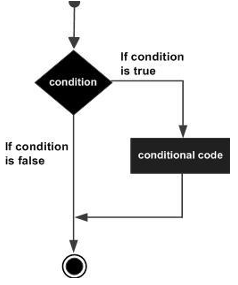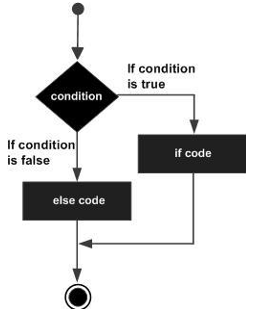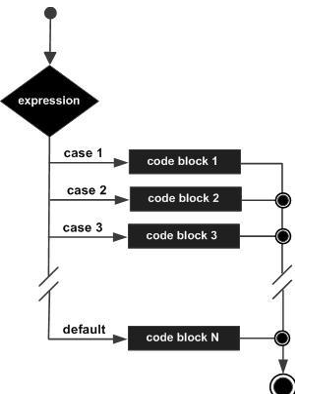Conditional Logic in TypeScript
1. Problem Statement
A school portal needs a Student Performance Evaluator module. It must:
-
Check exam eligibility based on attendance.
-
Determine pass/fail status by score.
-
Assign letter grades (A–F) using score ranges.
-
Provide feedback messages for each grade.
Manual spreadsheet rules have become error-prone and hard to update. You need clear, maintainable code that handles each decision point correctly.
2. Learning Objectives
By the end of this lesson, you will be able to:
-
Write
ifstatements to run code when a condition is true. -
Use
if…elsefor two-way branching. -
Chain
else iffor multi-way decisions. -
Implement
switchstatements for discrete value handling. -
Organize decision logic into reusable functions.
3. Concept Introduction with Analogy
Analogy: The School Principal’s Decision Book
Just as a principal uses a well-organized “Decision Book” of rules to manage students, your TypeScript code uses conditional statements to make decisions in a clear, reliable way. Let’s unpack each rule in the book and see how it maps to TypeScript constructs:
-
Eligibility Rule →
ifStatement-
Book Entry:
“If a student’s attendance is 75% or higher, they may sit the exam.”
-
Code Equivalent:
if (attendance >= 75) {
// allow exam
} -
Explanation: The principal flips to the “attendance” page, checks the percentage, and if the condition is met, allows the student in. In code, the
ifevaluates a single boolean expression and runs its block only when true.Flowchart
The following flow chart shows how the if statement works.

-
-
Pass/Fail Rule →
if...elseStatement-
Book Entry:
“If the student’s score is 40 or above, mark ‘Pass’; otherwise, mark ‘Fail.’”
-
Code Equivalent:
if (score >= 40) {
// Pass logic
} else {
// Fail logic
} -
Explanation: The principal reads the score, and if it meets the threshold, writes “Pass.” Otherwise, they write “Fail.” The
if…elsegives exactly two paths-one when true, one when false-matching the principal’s binary decision.
Flowchart
The following flow chart shows how the if...else statement works.

-
-
Grading Rule →
if…else if…elseLadder-
Book Entry:
“90–100 → A; 80–89 → B; 70–79 → C; 60–69 → D; below 60 → F.”
-
Code Equivalent:
if (score >= 90) {
grade = "A";
} else if (score >= 80) {
grade = "B";
} else if (score >= 70) {
grade = "C";
} else if (score >= 60) {
grade = "D";
} else {
grade = "F";
} -
Explanation: The principal works down the list of ranges, stopping as soon as a match is found. The
else ifladder mirrors this sequential evaluation-each condition is tested in turn until one is true.
-
-
Feedback Rule →
switchStatement-
Book Entry:
“For grade A, comment ‘Excellent’; for B, ‘Good job’; for C, ‘Keep improving’; etc.”
-
Code Equivalent:
switch (grade) {
case "A":
// Excellent
break;
case "B":
// Good job
break;
// … and so on
default:
// Fallback comment
} -
Explanation: The principal turns directly to the grade’s section in the Book and reads the prepared comment. A
switchlets code jump straight to the matchingcaseblock for a discrete set of values, then “break” to stop.Flowchart
The following flow chart explains how a switch-case statement works.

-
Why This Analogy Works
-
Clarity & Organization: Just as the principal’s Book keeps rules neatly organized, conditional statements structure your logic in clear, maintainable blocks.
-
Step-by-Step Evaluation: The principal follows each rule in a predictable order; your code does the same by evaluating conditions linearly.
-
Single Source of Truth: The Book holds definitive policies; your code holds business rules in one place, minimizing ambiguity.
-
Easy Updates: If the principal changes a policy, they edit the Book. If requirements change, you update or extend your
if/switchlogic-keeping code and intent in sync.
4. Technical Deep Dive
4.1 if Statement
Syntax:
if (condition) {
// executes when condition is true
}
Flow: Evaluate condition; if true, run block; otherwise skip it.
4.2 if…else Statement
Syntax:
if (condition) {
// true block
} else {
// false block
}
Flow: One of two paths.
4.3 Nested if…else if…else
Syntax:
if (cond1) {
// block1
} else if (cond2) {
// block2
} else {
// block3
}
Flow: Checks in order, runs first matching block.
4.4 switch Statement
Syntax:
switch (value) {
case const1:
// block1
break;
case const2:
// block2
break;
default:
// fallback
break;
}
Flow: Matches value to a case; runs that block; break prevents fall-through.
5. Step-by-Step Code Walkthrough
Below is a complete implementation of our four rules:
// 1. Check eligibility: attendance ≥ 75%
function checkEligibility(attendance: number): boolean {
if (attendance >= 75) {
console.log("Eligible: attendance is sufficient.");
return true;
} else {
console.log("Not eligible: attendance below 75%.");
return false;
}
}
// 2. Determine pass/fail: score ≥ 40
function passOrFail(score: number): boolean {
if (score >= 40) {
console.log("Result: Pass");
return true;
} else {
console.log("Result: Fail");
return false;
}
}
// 3. Assign letter grade
function assignGrade(score: number): string {
if (score >= 90) {
return "A";
} else if (score >= 80) {
return "B";
} else if (score >= 70) {
return "C";
} else if (score >= 60) {
return "D";
} else {
return "F";
}
}
// 4. Provide feedback via switch
function provideFeedback(grade: string): void {
switch (grade) {
case "A":
console.log("Feedback: Excellent performance!");
break;
case "B":
console.log("Feedback: Great job! Keep it up.");
break;
case "C":
console.log("Feedback: Good effort; aim higher next time.");
break;
case "D":
console.log("Feedback: Needs improvement; review your work.");
break;
default:
console.log("Feedback: Unsatisfactory; please seek help.");
break;
}
}
// Main evaluator combining all steps
function evaluateStudent(attendance: number, score: number): void {
if (!checkEligibility(attendance)) return;
if (!passOrFail(score)) return;
const grade = assignGrade(score);
console.log(`Assigned Grade: ${grade}`);
provideFeedback(grade);
}
// Example Run
evaluateStudent(80, 85);
6. Interactive Challenge / Mini-Project
Implement four small functions to practice each decision-making construct:
-
checkSign(num: number): void
Use anifstatement to log whethernumis positive. -
evenOrOdd(num: number): void
Use anif…elseto log whethernumis even or odd. -
getGrade(score: number): string
Use anif…else if…elseladder to return a letter grade:-
score ≥90 → "A" -
score ≥80 → "B" -
score ≥70 → "C" -
score ≥60 → "D" -
otherwise
"F"
-
-
provideFeedback(grade: string): void
Use aswitchto log a feedback message for each grade ("A"… "F"), with adefaultfor any unexpected value.
7. Common Pitfalls & Best Practices
-
Always include braces
{}even for single statements: avoids errors when adding lines later. -
Use strict equality
===for comparisons to avoid type coercion bugs. -
In
switch, always add adefaultcase andbreakafter eachcase. -
Order
else iffrom most to least restrictive to ensure correct branch selection. -
Keep each decision block focused on a single rule for readability.
8. Quick Recap & Key Takeaways
-
iffor single checks. -
if…elsefor two‐way branching. -
else iffor multiple conditions. -
switchfor selecting among discrete values. -
Organize decision logic into small, reusable functions for clarity and maintainability.